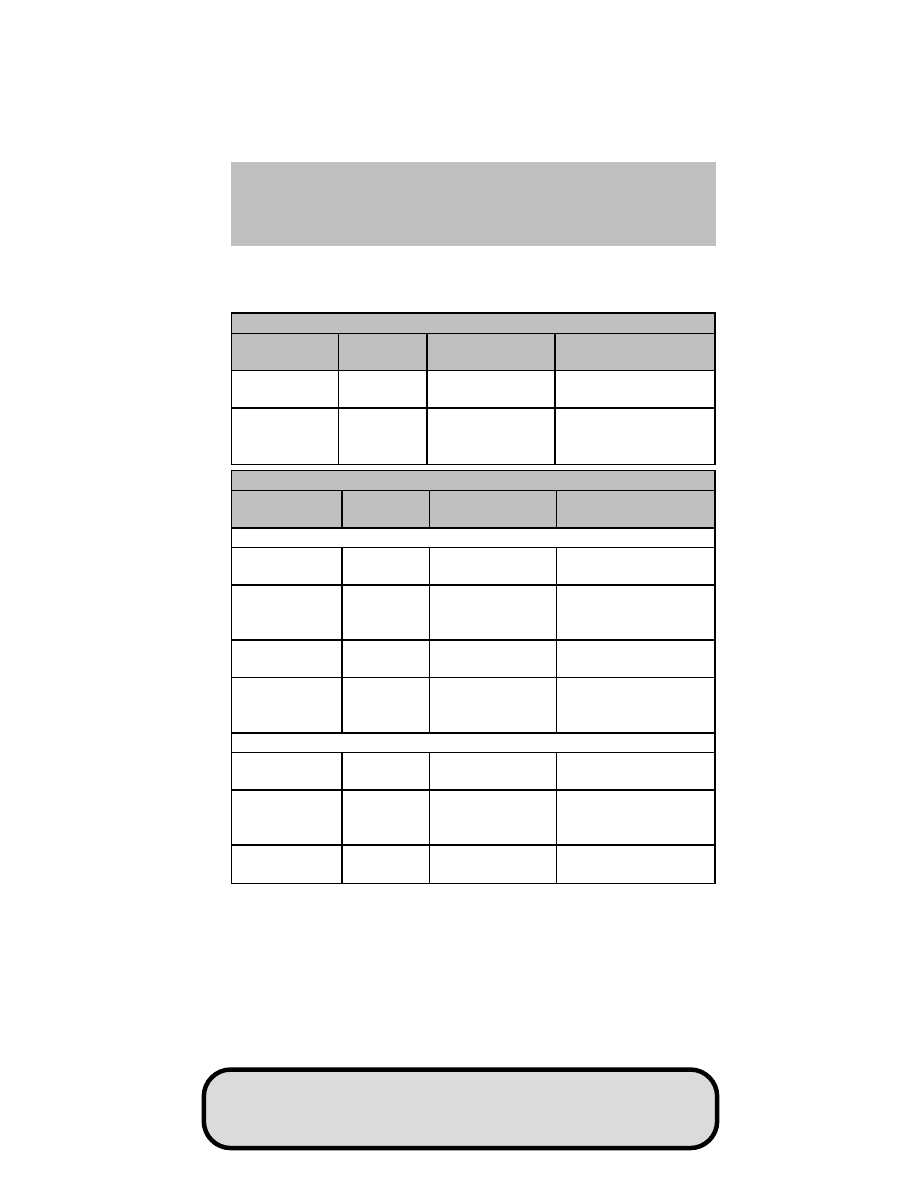Mazda B-Series (2010 year). Manual - part 10

Towing a trailer places an additional load on your vehicle’s engine,
transmission, axle, brakes, tires and suspension. Inspect these
components carefully after any towing operation.
Regular Cab
Engine
Rear axle
ratio
Maximum
GCWR - lb (kg)
Maximum trailer
weight - lb (kg)
2.3L w/manual
transmission
3.73
4,800 (2,177)
1,540 (699)
2.3L
w/automatic
transmission
4.10
5,500 (2,495)
2,200 (998)
4x2 Cab Plus 4
Engine
Rear axle
ratio
Maximum
GCWR - lb (kg)
Maximum trailer
weight - lb (kg)
2–Door without Jump Seat
2.3L w/manual
transmission
4.10
4,800 (2,177)
1,380 (626)
2.3L
w/automatic
transmission
4.10
5,500 (2,495)
2,060 (934)
4.0L w/manual
transmission
3.55
7,000 (3,175)
3,380 (1,533)
4.0L
w/automatic
transmission
3.55
9,500 (4309)
5,820 (2,640)
4–Door without Jump Seat
2.3L w/manual
transmission
4.10
4,800 (2,177)
1,300 (590)
2.3L
w/automatic
transmission
4.10
5,500 (2,495)
1,980 (898)
4.0L w/manual
transmission
3.55
7,000 (3175)
3,300 (1,497)
Tires, Wheels and Loading
154
REVIEW COPY ——
2010 B-Series (mbs), Owners Guide (own2002), 1st Printing, Market:
Canadian_French (fr_can)